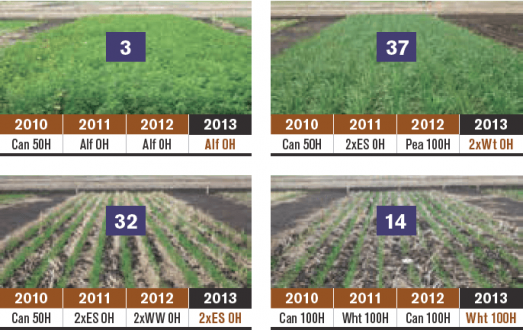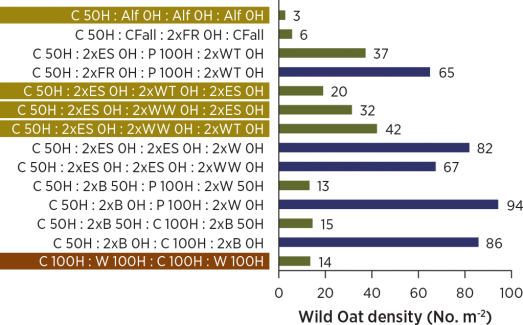Wild oat options
Rotations that include fall-seeded crops, silage crops and perennials seem to provide effective wild oat control without the need for herbicides. These principles can be used in an integrated weed management program.
Neil Harker with Agriculture and Agri-Food Canada (AAFC) leads a five-year study at eight sites across Canada: Lacombe, AB, Lethbridge, AB, Edmonton, AB, Scott, SK, Saskatoon, SK, Winnipeg, MB, New Liskeard, ON and Normandin, QC. Experiments and data collection will continue through the 2014 growing season.
The objective is to determine if diverse rotation treatments combined with other cultural practices can reduce wild oat populations. The study will also see if diverse crop rotations influence the wild oat seed bank, soil microbes, and crop quality.
Natural wild oat populations were supplemented with seeded wild oats at each site to ensure adequate, uniform wild oat populations. Broadleaf weeds were treated with full herbicide rates.
Many of the crops were seeded at two times the normal seeding rate.
This no-till study shows that a rotation that includes fall-seeded crops such as winter wheat, perennial crops such as alfalfa, and annual crops with alternative harvest dates, such as silage barley, can provide significant wild oat management and reduce the need for herbicide applications. This can reduce the risk of building up a population of herbicide-resistant wild oats, and provide effective control options in fields where herbicide resistant wild oats already exist.

Can, Alf, ES, WT, WW, and Wht = Canola, Alfalfa, Early-Cut Barley Silage, Winter Triticale, Winter Wheat, and Wheat, respectively.
Note the canopy cover for perennial and winter annual (top) versus barley or spring wheat (bottom) crops at the time when wild oat is emerging. The former effectively preclude adequate light and other resource acquisition by emerging wild oat seedlings. Seeding rate is either recommended or double (2x). Herbicide rates are 0, 50 or 100% (H). The large numbers indicate spring wild oat emergence density averaged across four replications for the specific treatment.

C, Alf, CFall, FR, ES, P, WT, WW, and Wht =Canola, Alfalfa, Chem Fallow, Fall Rye, Early-Cut Barley Silage, Pea, Winter Triticale, Winter Wheat, and Wheat, respectively
Seeding rate is either recommended or double (2x). Herbicide rates are 0, 50 or 100% (H). Blue bars are significantly greater than the bottom treatment (P < 0.05). Treatments with the yellow box are those that received no wild oat herbicides for the last 3 years and yet have similar wild oat density as the 100% herbicide regime in the canola-wheat rotation (red box).
Principal investigator: Neil Harker, Agriculture and Agri-Food Canada, Lacombe, AB
Collaborators: John O’Donovan, Kelly Turkington, Vern Baron,
Robert Blackshaw, Eric Johnson, Denis Pageau, Linda Hall, Chris Willenborg, Steve Shirtliffe, Rob Gulden, John Kobler, Newton Lupwayi and Elwin Smith




